In today’s digital age, having a solid online presence isn’t optional – it’s essential. Whether you’re a small startup looking to gain visibility or an established business seeking further growth, the right digital marketing strategies can transform your brand’s online footprint. As someone who’s been in the trenches, helping household names like Dell, Yahoo, and others gain traction, I’m here to share insights that are tried, true, and incredibly effective. Let’s walk through these strategies step-by-step to help you boost your online presence in 2024.
This isn’t just a generic checklist – it’s a strategic guide, one designed to empower you to make informed decisions that align with your business goals. So buckle up; we’re about to dive into the core of what makes digital marketing work today.
Step 1: Define Your Digital Marketing Goals
Every successful digital marketing campaign starts with clear, measurable goals. It’s not enough to say, “I want more followers” or “I want more website visits” – you need to define exactly what success looks like for your brand.
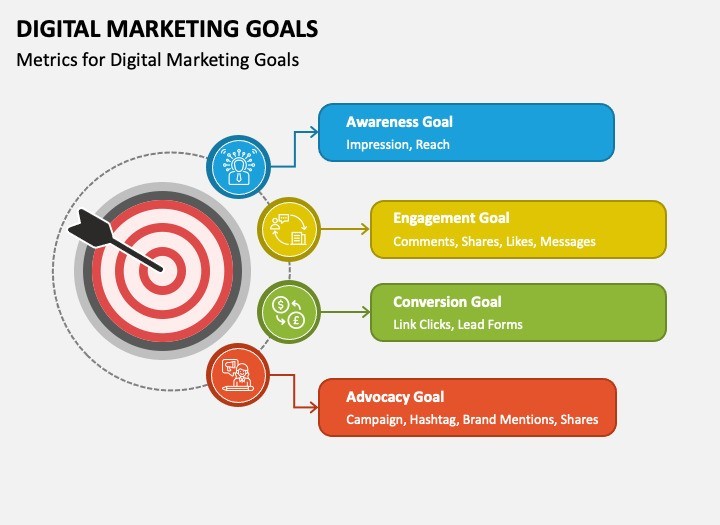
Key Questions to Ask
- What are your business goals? Do you want to increase brand awareness, drive more traffic, or boost conversions? Knowing your ultimate objective shapes your marketing strategy.
- Who is your target audience? Understand their online behavior, interests, and needs. Are they searching for educational content, looking for the best deals, or wanting personalized experiences?
- What is your timeline? Define milestones for your strategy. Achieving meaningful growth doesn’t happen overnight, so be realistic about timelines.
How to Do It
- Start by analyzing your current business situation – What are your strengths, weaknesses, opportunities, and threats (SWOT analysis)?
- Set SMART (Specific, Measurable, Achievable, Relevant, Time-bound) goals that align with your overall business objectives.
- Use tools like Google Analytics to track performance and ensure your goals are being met.
Expert Tip: Align your digital marketing goals with broader business objectives. For instance, if your goal is revenue growth, then your digital marketing focus should be on conversions rather than just social media followers.
Step 2: Optimize Your Website for Search Engines (SEO)
Search Engine Optimization (SEO) is the foundation of a strong online presence. Imagine your website as a store – if it’s located in a remote area that’s hard to find, your business will struggle. SEO ensures your business stays on the main street where your customers are looking.
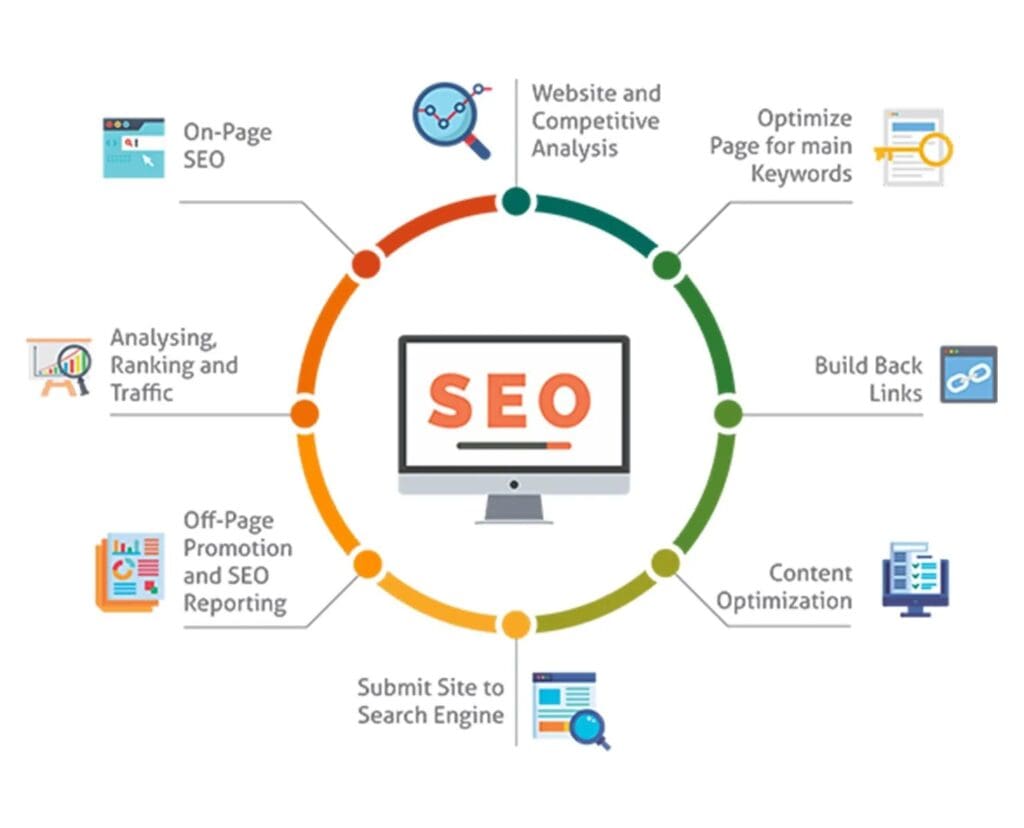
Key SEO Tactics
- Keyword Research: Identify keywords that your target audience uses to find businesses like yours. Use tools like Ahrefs, SEMrush, or Google Keyword Planner to research the most relevant keywords.
- On-Page SEO: Optimize title tags, meta descriptions, header tags, and image alt text with relevant keywords to improve your site’s visibility in search results.
- Technical SEO: Ensure your website is mobile-friendly, loads quickly, and is easy to navigate. User experience plays a massive role in SEO ranking.
How to Do It
- Use keyword research tools to find the keywords your audience is using.
- Implement on-page SEO by updating website meta tags, headers, and URLs with keywords.
- Conduct regular technical audits using tools like Screaming Frog or Moz to ensure there are no errors that could negatively impact your site’s ranking.
Expert Tip: Regularly update your website content with fresh, high-quality content to improve ranking and stay relevant. Google rewards sites that provide consistent value to users.
Step 3: Develop a Strong Content Marketing Plan
Content marketing is the bridge between your brand and your audience. High-quality content helps establish authority, engage potential customers, and build relationships.
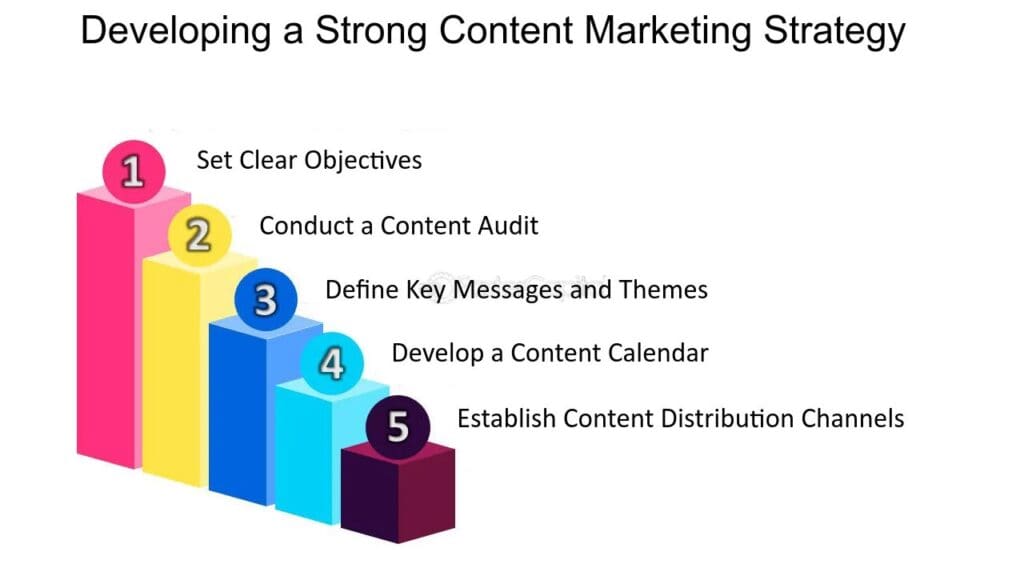
Elements of an Effective Content Marketing Plan
- Blog Posts and Articles: Use your blog to address common questions, share insights, and provide value. Content helps establish your brand as an industry leader.
- Video Content: Platforms like YouTube and TikTok are incredibly influential today. Video content boosts engagement and can help explain your services in a relatable way.
- E-books and Guides: Offer in-depth content in exchange for email addresses. This approach works great for lead generation and positions your brand as an expert.
How to Do It
- Start with a content audit to identify gaps in your current content offering.
- Develop a content calendar that outlines what topics you will cover and when they will be published.
- Use tools like BuzzSumo to analyze trending topics in your niche to ensure your content is relevant.
Expert Tip: Focus on creating evergreen content – posts that remain valuable over time. They will continue to bring in traffic long after they’re published.
Step 4: Leverage Social Media for Engagement
Social media marketing goes beyond posting pictures on Instagram or sharing tweets. To make an impact, your presence should resonate with your audience—it’s about building community and nurturing engagement.
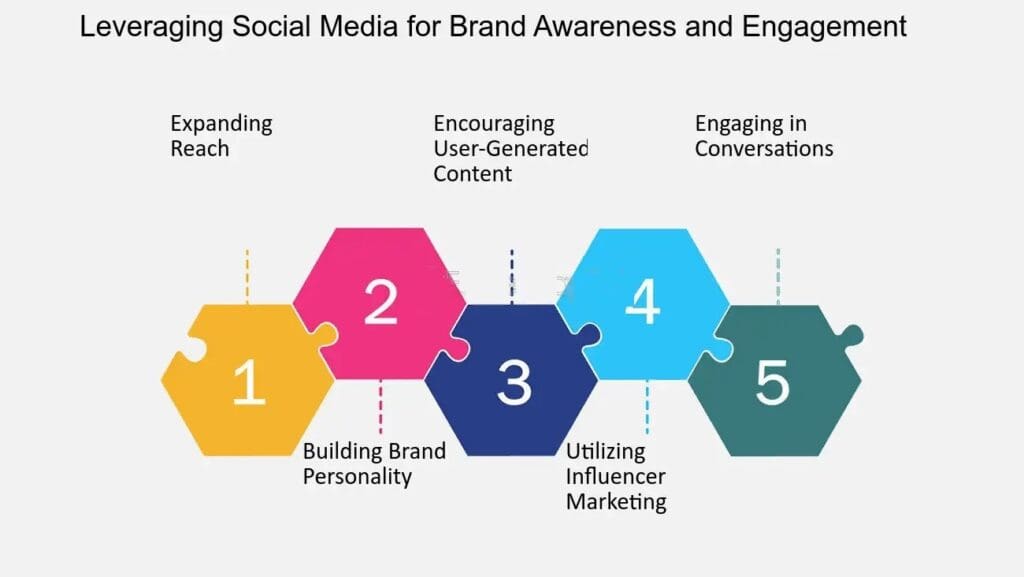
Key Social Media Strategies
- Platform Selection: Don’t spread yourself too thin. Instead, choose platforms where your target audience is most active. For B2B businesses, LinkedIn might be best; for younger demographics, Instagram or TikTok can drive more value.
- Content Calendar: Plan your social media posts in advance. Consistency is key to keeping your audience engaged and building trust.
- Interaction & Engagement: Reply to comments, join discussions, and make your audience feel heard. Social media isn’t a one-way street—the more interaction, the better the relationship.
How to Do It
- Analyze your audience demographics to determine which platforms are most effective.
- Use scheduling tools like Buffer or Hootsuite to plan and schedule posts.
- Create interactive content like polls, Q&A sessions, and live videos to foster engagement.
Expert Tip: Use social media analytics tools to understand what content resonates most with your audience. Data-driven decisions help fine-tune your efforts for better results.
Step 5: Invest in Pay-Per-Click Advertising (PPC)
Organic strategies are powerful, but sometimes you need that extra boost to get ahead of the competition. Pay-Per-Click advertising is a way to gain quick visibility on search engines and social platforms.
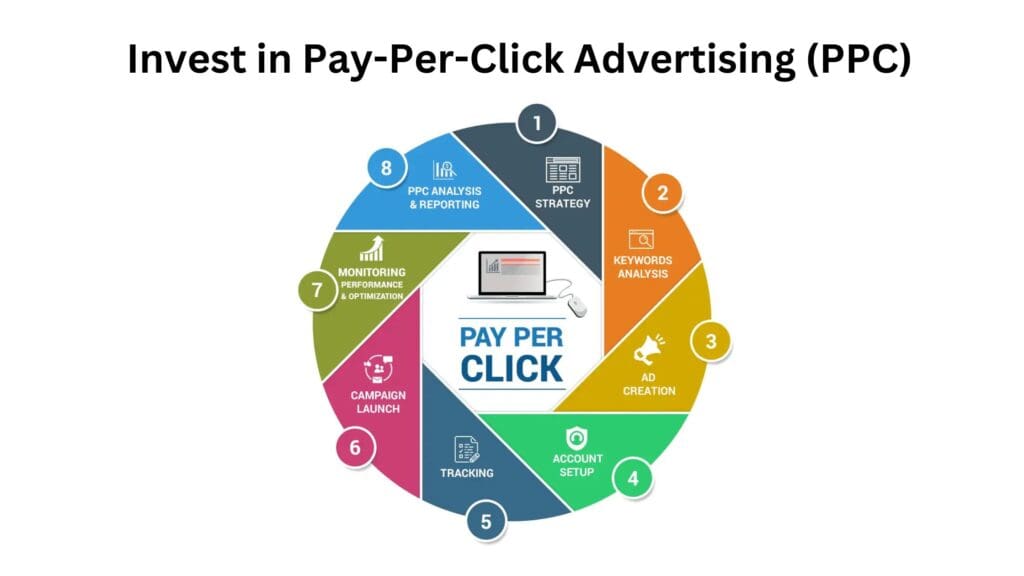
How to Run an Effective PPC Campaign
- Keyword Selection: Select keywords based on intent—target transactional keywords if your goal is conversions.
- Targeting Options: Utilize targeting features like demographics, interests, and behaviors to refine your ad reach.
- Split Testing: Always run A/B tests on your ads—experiment with different headlines, images, and calls-to-action to see what performs best.
How to Do It
- Use tools like Google Ads to research and select high-intent keywords.
- Set up targeted ad groups and refine your target audience by location, interest, and behavior.
- Run A/B tests to measure what version of your ad performs best and optimize accordingly.
Expert Tip: PPC is only effective when you consistently monitor and optimize. Don’t just set your campaigns and forget them—track conversion rates and adjust based on data.
Step 6: Build a Lead Nurturing System Using Email Marketing
Email marketing remains one of the highest ROI channels in digital marketing. Why? Because it’s direct, personalized, and reaches your audience where they are every day—their inbox.
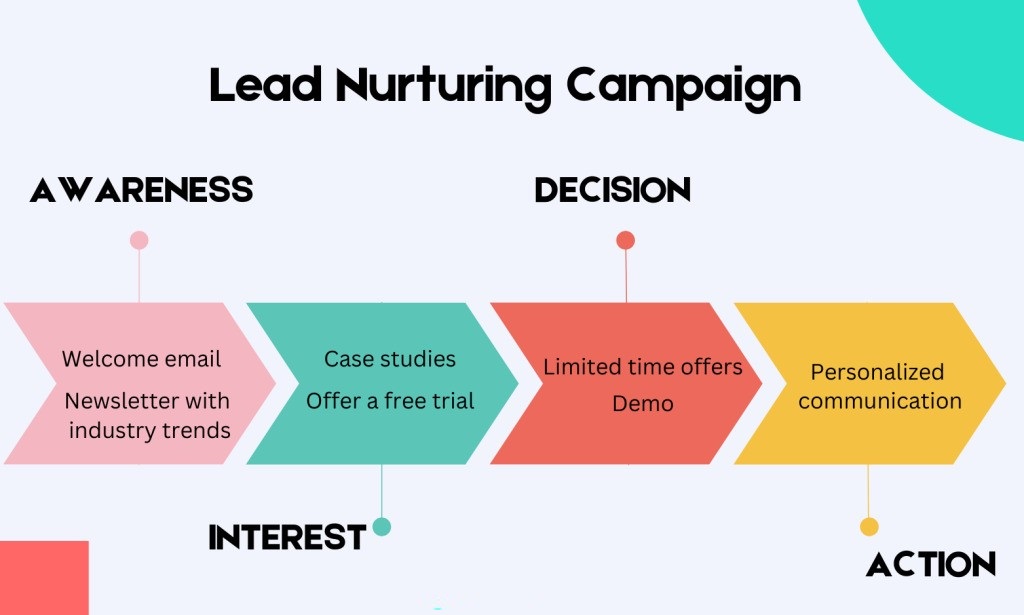
How to Build Effective Email Campaigns
- Segmentation: Not all your customers have the same needs. Segment your audience based on where they are in the sales funnel and personalize your messaging.
- Automated Sequences: Create email sequences to nurture leads automatically. Welcome new subscribers, follow up after downloads, and offer value consistently.
- Value-First Approach: Avoid the hard sell. Provide value, insights, and solutions through email. Build trust first; conversions will follow.
How to Do It
- Segment your email list based on demographics and previous customer behavior.
- Set up automated workflows using tools like Mailchimp or HubSpot to nurture leads.
- Use compelling subject lines and content to keep readers engaged.
Expert Tip: Use tools like Mailchimp, ActiveCampaign, or HubSpot to automate your email marketing and get the most from your campaigns.
Step 7: Utilize Analytics to Track and Optimize Performance
No strategy is complete without analyzing what works and what doesn’t. You can’t improve what you don’t measure, so tracking your performance is crucial.
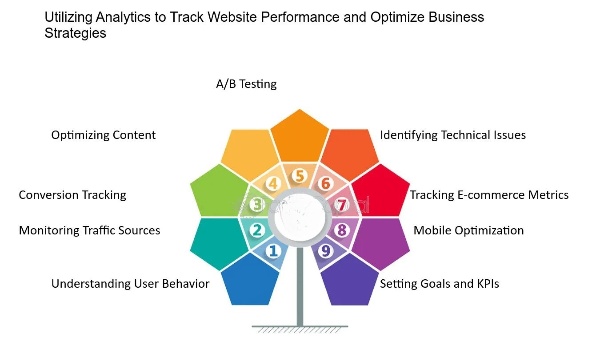
Key Analytics Tools
- Google Analytics: Track website visits, bounce rates, traffic sources, and more to understand what’s driving your success.
- Social Media Insights: Each platform provides its own analytics tools—use these to determine which posts are resonating most with your audience.
- Conversion Tracking: Utilize Google Ads and Facebook conversion tracking to understand which ads are converting and refine your ad spend accordingly.
How to Do It
- Set up Google Analytics on your website to measure performance metrics like traffic and user engagement.
- Use Facebook Pixel to track social media ad performance and understand audience behavior.
- Regularly review reports and adjust campaigns to optimize for performance.
Expert Tip: Set up KPIs (Key Performance Indicators) for each digital marketing strategy. For example, measure website traffic for SEO, conversion rates for PPC, and open rates for email marketing. Track these to make informed decisions.
Step 8: Foster Online Reviews and Social Proof
In an era where consumers are skeptical, social proof can make or break your business. Online reviews build credibility and help sway potential customers to take the plunge.
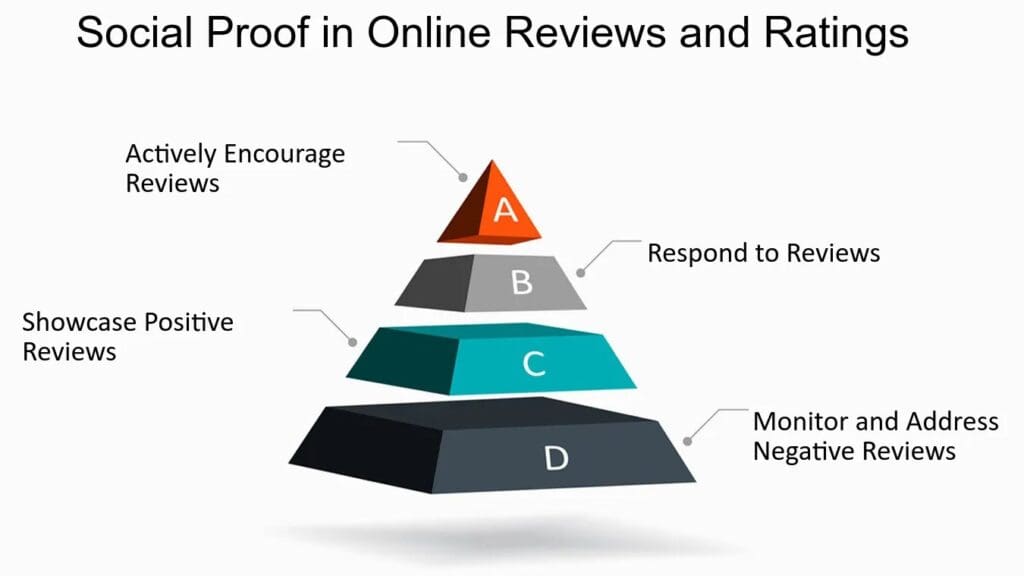
Ways to Build Social Proof
- Request Reviews: Prompt happy customers to leave reviews on Google My Business, Yelp, and other relevant platforms.
- Customer Testimonials: Add customer testimonials to your website, highlight them on social media, and include them in email campaigns.
- Influencer Partnerships: Work with influencers in your niche to expand your reach and generate trust. Authentic endorsements are powerful.
How to Do It
- Send post-purchase emails to satisfied customers asking them to leave reviews.
- Set up profiles on major review sites and direct happy customers there.
- Use influencers or brand advocates to share positive experiences.
Expert Tip: Make leaving a review as easy as possible. Provide direct links and guide customers through the process.
Step 9: Embrace Video and Live Streaming
Video content isn’t just trendy; it’s one of the most powerful tools available for engagement. Whether it’s a well-produced video or an impromptu live stream, video can capture attention in ways that text and images simply can’t.
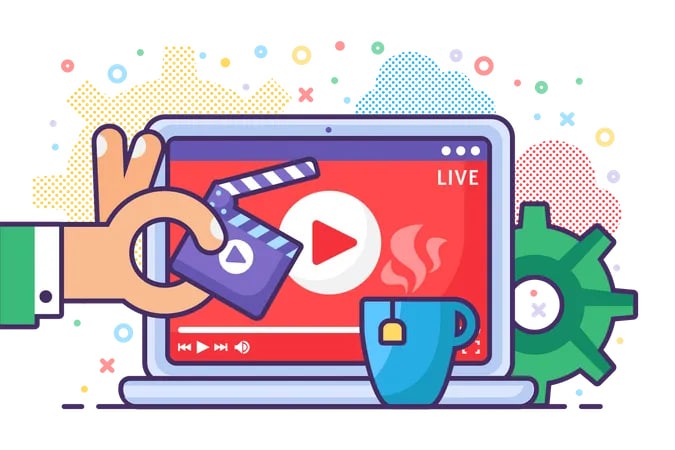
Ideas for Leveraging Video
- Live Q&A Sessions: Engage directly with your audience by answering their questions in real-time. This boosts transparency and builds trust.
- Product Demonstrations: Create video tutorials showing how to use your products. This is particularly effective for businesses selling physical goods or complex services.
- Behind-the-Scenes Content: Give your audience a peek into what goes on behind your business. Humanizing your brand can increase loyalty and engagement.
How to Do It
- Set up a YouTube channel to house longer video content and provide value through tutorials or insights.
- Use platforms like Instagram Live or Facebook Live to do Q&A sessions or share behind-the-scenes content.
- Repurpose content across different platforms to maximize reach and engagement.
Expert Tip: Use platforms like YouTube, Instagram Live, and Facebook Live to create a variety of content that suits different customer preferences.
Step 10: Stay Updated with Industry Trends
The digital marketing landscape is continuously evolving. What works today may not work tomorrow. Staying updated with the latest industry trends and adapting your strategy is key to long-term success.

Ways to Stay Updated
- Follow Industry Leaders: Keep an eye on what top digital marketing leaders are saying on platforms like LinkedIn and Twitter.
- Attend Conferences and Webinars: Events like Social Media Marketing World or MozCon are great ways to stay informed and connect with industry experts.
- Read Industry Blogs: Subscribe to sites like HubSpot, Neil Patel, and Moz to keep up with trends and emerging tools.
How to Do It
- Set up Google Alerts for keywords related to your industry.
- Allocate time weekly to review industry blogs, newsletters, or videos from key thought leaders.
- Attend one industry event each quarter to network and gain insights.
Expert Tip: Dedicate some time each month to research and education. Being proactive ensures your strategies remain ahead of the curve, not behind.
Conclusion: Create a Digital Marketing Strategy That Works for You
No two digital marketing strategies will look exactly the same, and that’s a good thing. Your brand is unique, and your marketing should reflect that. The strategies outlined above are foundational, but the magic happens when you tailor them to fit your brand, audience, and goals.
Remember, digital marketing is not a sprint—it’s a marathon. Building an impactful online presence takes time, persistence, and constant optimization. Use this guide as a starting point, adapt as needed, and most importantly, stay consistent.
Ready to boost your online presence? Start by implementing one strategy today and build momentum from there. Your brand’s digital future is in your hands.

